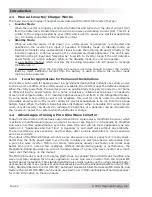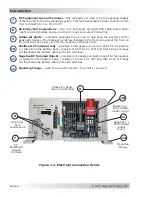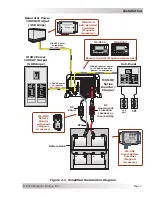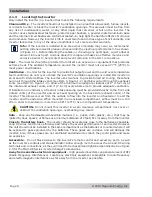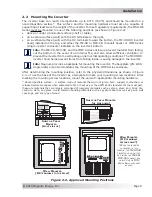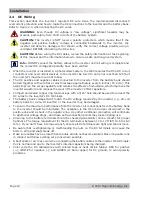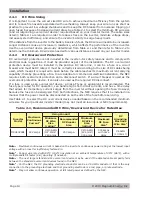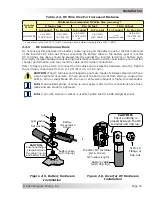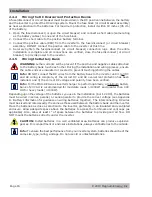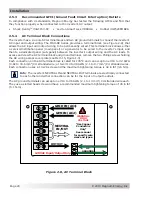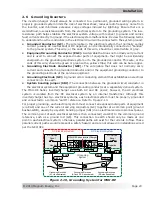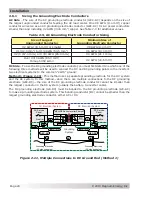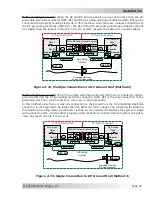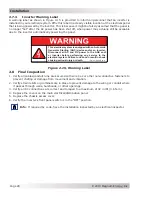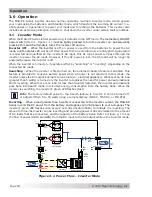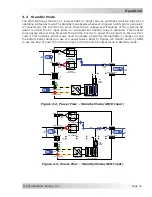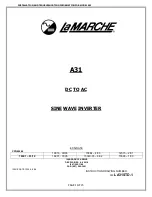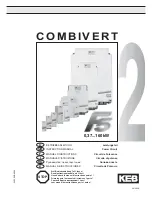
©
2013 Magnum Energy, Inc.
Page 16
Installation
2.4.4
Wiring the DC Overcurrent Protection Device
A fuse/disconnect or circuit breaker must be provided in the DC positive line between the battery
and the inverter to protect the DC wiring system. Mount the fuse block (or circuit breaker assembly)
as near as practical to the batteries. For maximum protection, install it within 18 inches (45 cm)
of the battery.
1. Open the fuse disconnect (or open the circuit breaker) and connect a short cable (same rating
as the battery cables) to one end of the fuse block.
2. Connect the short cable to the positive battery terminal.
3. Connect the positive cable (RED) from the inverter to the fuse/disconnect (or circuit breaker)
assembly. DO NOT connect the positive cable to the inverter at this time.
4. Securely tighten the fuse/disconnect (or circuit breaker) connection lugs. Once the entire
installation is complete and all connections are veri
fi
ed, close the fuse disconnect (or circuit
breaker) to provide power to the inverter.
2.4.5
Wiring the Battery Bank
WARNING:
Lethal currents will be present if the positive and negative cables attached
to the battery bank touch each other. During the installation and wiring process, ensure
the cable ends are insulated or covered to prevent touching/shorting the cables.
Info:
DO NOT connect the DC wires from the battery bank to the inverter until 1) all DC
and AC wiring is complete, 2) the correct DC and AC overcurrent protection has been
installed, and 3) the correct DC voltage and polarity have been veri
fi
ed.
Info:
For the MSH-RE Series inverter/charger to perform optimally, a minimum battery
bank of 200 AH is recommended for moderate loads (<1000W) and greater than 400
AH for heavy loads (
≥
1000W).
Depending upon the voltage of the batteries you use in the installation (6 or 12 VDC), the batteries
must be wired in series, parallel, or series-parallel to provide the correct voltage (see Appendix
B - Battery Information for guidance on wiring batteries together). The interconnecting DC wires
must be sized and rated exactly the same as those used between the battery bank and the inverter.
Place the batteries as close as practical to the inverter, preferably in an insulated and ventilated
enclosure. Allow adequate space above the batteries to access the terminals and vent caps (as
applicable). Also, allow at least 1” of space between the batteries to provide good air
fl
ow. DO
NOT mount the batteries directly under the inverter.
CAUTION:
Install batteries in a well ventilated area. Batteries can produce explosive
gasses. For compartment or enclosure installations, always vent batteries to the outside.
Info:
To ensure the best performance from your inverter system, batteries should be of the
same size, type, rating, and age. Do not use old or untested batteries.

